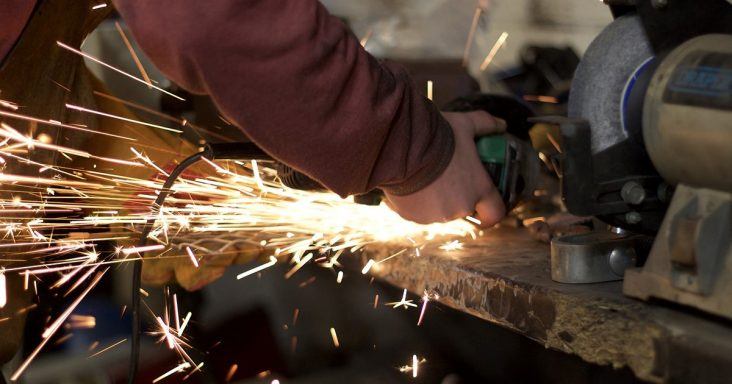Manufacturing sector growth accelerates in May; PMI up to 61.2%
by June 1, 2021 3:56 pm 414 views

Economic activity in the manufacturing sector increased at a faster rate in May, and the overall economy grew for the 12th consecutive month, according to the Institute for Supply Management (ISM). Meanwhile, manufacturers continue to report labor and parts shortages, limiting growth potential.
The ISM released Tuesday (June 1) the Manufacturing ISM Report on Business showing the Manufacturing Purchasing Managers’ Index (PMI) rose 0.5 percentage points to 61.2% in May, from April. A reading above 50% indicates the manufacturing economy is expanding.
The new orders index rose 2.7 percentage points to 67% in May, from April. The production index fell 4 percentage points to 58.5%. The backlog of orders index increased 2.4 percentage points to 70.6%. The employment index fell 4.2 percentage points to 50.9%. The supplier deliveries index rose 3.8 percentage points to 78.8%. The inventories index increased 4.3 percentage points to 50.8%. The prices index declined 1.6 percentage points to 88%. The new export orders index rose 0.5 percentage points to 55.4%. The imports index increased 1.8 percentage points to 54%.
“The manufacturing economy continued expansion in May,” said Timothy Fiore, chair of the ISM Manufacturing Business Survey Committee. “Business Survey Committee panelists reported that their companies and suppliers continue to struggle to meet increasing levels of demand. Record-long lead times, wide-scale shortages of critical basic materials, rising commodities prices and difficulties in transporting products are continuing to affect all segments of the manufacturing economy. Worker absenteeism, short-term shutdowns due to part shortages, and difficulties in filling open positions continue to be issues that limit manufacturing-growth potential.”
“Optimistic panel sentiment increased, with 36 positive comments for every cautious comment, compared to an 11-to-1 ratio in April,” Fiore added. “Demand expanded, with the new orders index growing at a strong level, supported by the new export orders index continuing to expand, customers’ inventories index hitting another all-time low and backlog of orders index continuing at a record-high level.”
Consumption, which is measured by the production and employment indexes, indicated slowing expansion, contributing to an 8.2-percentage point decrease to the PMI. The employment index expanded for the sixth consecutive month, but panelists continue to report significant difficulties in attracting and retaining labor at their companies’ and suppliers’ facilities, Fiore said. Consumption was limited because of labor issues and supply constraints, while demand remains high. Inputs, which are expressed as supplier deliveries, inventories and imports, supported input-driven constraints to production expansion and at higher rates from April because of continued issues in supplier deliveries. Inputs contributed to the PMI calculation by a combined 8.1 percentage points. Imports improved in May. The prices index expanded for the 12th consecutive month, indicating continued supplier pricing power and scarcity of supply chain goods, Fiore noted.
The following industries reported moderate to strong growth in May: computer and electronic products; fabricated metal products; food, beverage and tobacco products; chemical products; transportation equipment; and petroleum and coal products.
“Manufacturing performed well for the 12th straight month, with demand, consumption and inputs registering strong growth compared to April,” Fiore said. “Panelists companies and their supply chains continue to struggle to respond to strong demand due to the difficulty in hiring and retaining direct labor. Record backlog, customer inventories and raw material lead times are being reported. The manufacturing recovery has transitioned from first addressing demand headwinds, to now overcoming labor obstacles across the entire value chain.”
Respondents across multiple industries cited labor and parts shortages. A respondent in the fabricated metal products industry said “this situation does not look to improve until possibly the fourth quarter of 2021 or beyond.”
In the nonmetallic mineral products industry, a respondent said the continued tightness in the global supply chain and the raw materials shortage as a result of the Gulf winter storms “make it less likely that any business can recover this year. Demand is strong, but what good is that if you cannot get the materials needed to produce your finished goods?”
